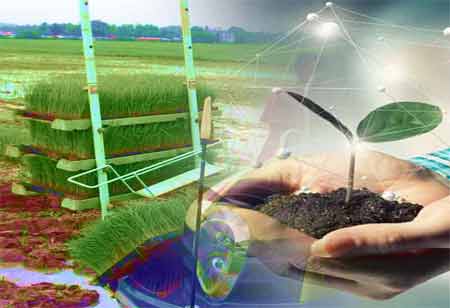Thank you for Subscribing to Agri Business Review Weekly Brief
The Future Looks Bright for Indoor Farming
With the increasing global population, there are many challenges to overcome before fears of a worldwide food shortage arise, including rising temperatures and more frequent droughts caused by global warming.

By
Agri Business Review | Wednesday, January 18, 2023
Stay ahead of the industry with exclusive feature stories on the top companies, expert insights and the latest news delivered straight to your inbox. Subscribe today.
Indoor farming methods are solving various obstacles that make traditional farming inefficient and unpredictable, paving the way for indoor methods as the future of farming.
FREMONT, CA: With the increasing global population, there are many challenges to overcome before fears of a worldwide food shortage arise, including rising temperatures and more frequent droughts caused by global warming. These hindrances are making traditional farming methods increasingly inefficient and unpredictable.
Traditional farming has had severe impacts during the pandemic. Border closures, quarantines, and disruptions to supply chains are limiting people’s access to food, especially in countries where pandemics have significantly affected or with high levels of food insecurity. There is an emerging consensus that the agriculture industry should adapt to use less water and chemicals, make crops less vulnerable to changes in the climate, and produce more reliable yields. A major key lies in the growing start-ups produced in indoor environments, where rising conditions can be better managed.
The indoor farming technology market has witnessed radical growth in recent years. Yields are much higher than with traditional farming methods. Crops from indoor farming are grown in three dimensions and can be grown year-round, independent of external weather conditions. Indoor farming adapts to a warming planet and can help slow down climate change by being more suitable, using less water, and producing fewer emissions.
There are farms built in shipping containers, often in parking lots. They serve local communities, indicating reduced emissions compared to traditional agriculture, involving transporting food much further. Such types of innovations are transformative for agriculture. These innovations are better for the environment and human health as they reduce the risk of water contamination due to runoff and align with increasing consumer demand.
There are also farms using nanobubble technology, which has allowed more than 100 indoor farms to connect their irrigation systems to generators providing oxygen through sub-micron gas-containing cavities to the plant’s roots to render chemical-free water. These nanobubbles lead to healthier roots, more resilient plants, and increased crop yields.
Greenhouse indoor farming technology has been in operation globally for many decades and has proven to be commercially viable. The costs of artificial lighting and other vertical farming technologies have been coming down significantly in the past few years. However, indoor farm technology start-ups are not disruptive but are on the same side as traditional farms for the greater cause.
Indoor farms do not have a competitive landscape; they work collaboratively by forming a network and sharing data. For example, a farm collects data on a research project with non-profit organisations to understand the sensory and nutritional characteristics of leafy greens for the benefit of the entire agriculture industry. On the other hand, if traditional and AI-based indoor farming work collaboratively in the future, there is little doubt that indoor farming is meeting the needs of a growing global population and supporting traditional farming.





